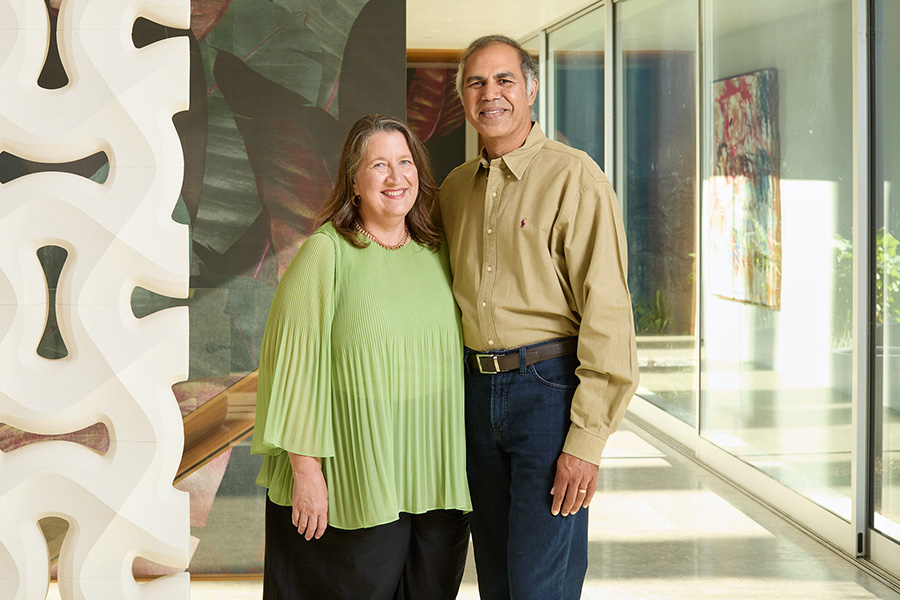- United States GP Quiz: Austin True or False? Atlassian Williams Racing
- Your Austin GP weekend gets a new pit stop: The F1® Hub Formula 1
- Barilla becomes F1’s official pasta sponsor ahead of Austin GP The Manual
- Free And Fun Events In Austin -…
Blog
-

United States GP Quiz: Austin True or False? – Atlassian Williams Racing
-

Marvell Adds Active Copper Cable Linear Equalizers to Its Connectivity Portfolio :: Marvell Technology, Inc. (MRVL)
Marvell ACC Linear Equalizers Enable Longer Reach and Power-efficient Copper in High-speed, Scale-up Interconnects
SANTA CLARA, Calif.–(BUSINESS WIRE)–
2025 OCP Global Summit — Marvell Technology, Inc. (NASDAQ: MRVL), a leader in data infrastructure semiconductor solutions, today announced that it is expanding its industry-leading connectivity portfolio with the addition of Marvell® active copper cable (ACC) linear equalizers.The scale and complexity of today’s AI workloads are driving exponential growth in data center bandwidth, requiring new challenges in managing thermal and power efficiency. Copper remains the preferred solution for in-rack scale-up interconnects due to its low cost and ease of deployment. However, next-generation AI systems demand thinner copper-based interconnects within server racks to improve airflow and cooling. Meanwhile, as bandwidth and cable gauge requirements continue to rise, the signal transmission performance of direct attach copper (DAC) technology is increasingly limited.
Analog ACC devices incorporate a signal equalizer, offering longer reach than traditional passive DAC cables while adding minimal latency. They are also more cost-effective and power-efficient than digital alternatives.
Leveraging Marvell industry-leading PAM4 technology and expertise in 100G/lane and 200G/lane analog devices, the new Marvell ACC linear equalizers deliver superior gain, extending the reach of ACC compared to competitive ACC solutions at the same cable gauge. They support 800G and 1.6T copper interconnects and expand the Marvell scale-up interconnect portfolio, which includes chipsets for active electrical cables (AEC) and active optical cables (AOC).
“Offering a full complement of ACC, AEC and AOC silicon technologies, Marvell is unique in the scale-up interconnect landscape, providing customers with a full range of solutions to meet their individual requirements,” said Xi Wang, senior vice president and general manager, Connectivity Business Unit at Marvell. “We are excited to work with our ecosystem of cable OEM partners and system vendors to provide end customers with high-performance, in-rack connectivity solutions to handle their most advanced AI workloads.”
Marvell is showcasing its latest advancements in accelerated infrastructure at the OCP Global Summit this week, October 13 to 16, at the San Jose Convention Center in San Jose, California. More information about Marvell at OCP 2025 can be found here.
Availability
Marvell ACC linear equalizers are currently sampling to customers.
About Marvell
To deliver the data infrastructure technology that connects the world, we’re building solutions on the most powerful foundation: our partnerships with our customers. Trusted by the world’s leading technology companies for over 30 years, we move, store, process and secure the world’s data with semiconductor solutions designed for our customers’ current needs and future ambitions. Through a process of deep collaboration and transparency, we’re ultimately changing the way tomorrow’s enterprise, cloud and carrier architectures transform—for the better.
Marvell and the M logo are trademarks of Marvell or its affiliates. Please visit www.marvell.com for a complete list of Marvell trademarks. Other names and brands may be claimed as the property of others.
This press release contains forward-looking statements within the meaning of the federal securities laws that involve risks and uncertainties. Forward-looking statements include, without limitation, any statement that may predict, forecast, indicate or imply future events, results or achievements. Actual events, results or achievements may differ materially from those contemplated in this press release. Forward-looking statements are only predictions and are subject to risks, uncertainties and assumptions that are difficult to predict, including those described in the “Risk Factors” section of our Annual Reports on Form 10-K, Quarterly Reports on Form 10-Q and other documents filed by us from time to time with the SEC. Forward-looking statements speak only as of the date they are made. Readers are cautioned not to put undue reliance on forward-looking statements, and no person assumes any obligation to update or revise any such forward-looking statements, whether as a result of new information, future events or otherwise.
View source version on businesswire.com: https://www.businesswire.com/news/home/20251014066478/en/
Media Contact:
George Millington
pr@marvell.comSource: Marvell Technology, Inc.
Released October 14, 2025
Continue Reading
-

The Mars moment: Why now is the time to build the future
We’re entering a new era of space. One defined not by exploration alone, but by the infrastructure that makes a sustained presence possible.
For decades, our presence in space has been limited to short-term missions: land, explore…
Continue Reading
-

Christie’s Will Sell Works From Bill and Dorothy Fisher Collection
Christie’s has been consign to sell works of Impressionism from the Bill and Dorothy Fisher Collection during its marquee auctions in November.
The consignment from the Fisher Governor Foundation includes works by Paul Signac, Camille…
Continue Reading
-

FENDER EXPANDS AMERICAN PROFESSIONAL SERIES, COMBINING HERITAGE, INNOVATION AND POWERFUL PERFORMANCE
From the World’s Most-Played Series Comes the New American Pro Classic, Featuring All-New Coastline Pickups, Upgraded Hardware and Timeless Finishes
HOLLYWOOD, Calif., Oct. 14, 2025 /PRNewswire/ — Fender Musical…
Continue Reading
-

New MIT initiative seeks to transform rare brain disorders research | MIT News
More than 300 million people worldwide are living with rare disorders — many of which have a genetic cause and affect the brain and nervous system — yet the vast majority of these conditions lack an approved therapy….
Continue Reading
-

Global government bonds rise as Trump slaps new 100% tariffs on China
Traders work on the floor of the New York Stock Exchange.
NYSE
Bond yields reflect borrowing costs for the governments who issue them, but can have an effect on mortgage rates, investment returns, the wider economy and personal borrowing.
Certain markets have their own domestic issues at play. An uptick in unemployment in the U.K., political instability in France, and the ongoing U.S. government shutdown are also influencing investors in those respective markets, for example.
However, market watchers told CNBC that Tuesday’s rally in sovereign bonds was largely due to a broad move into safer assets. Alongside bonds, gold, the Japanese yen and the Swiss franc — all typically regarded as safe haven assets in times of uncertainty or volatility — moved higher.
Investors are seeking options to ride out fresh tariffs-induced volatility, according to Marc Ostwald, chief economist and global strategist at London’s ADM Investor Services.
“The move lower in [developed markets] yields is broad based, and a function of flight to safety due to rising volatility in risk assets, even if a lot of this is very knee-jerk, and as we saw yesterday can turn on sixpence into renewed risk appetite,” he said in an email.
Monday saw a brief reprieve for equities following Friday’s selloff, with Wall Street’s major averages clawing back some of the previous session’s losses, while European stocks also notched gains.
“It is all tied to the now typical ambiguous and posturing headlines and measures from the U.S. and China in respect of trade relations and negotiations, and unlikely to dissipate in the near term,” Ostwald added on Tuesday.
“Longer term concerns about political instability … and headwinds from the high level of government debt, which no DM government is doing anything to address, will tend to temper gains, [but] this week’s speeches at the IMF/World Bank … which may offer hints on relaxing bank capital rules with regards to purchases of [U.S. Treasurys] could also give bonds something of a tailwind,” he said in reference to the IMF and the World Bank’s Annual Meetings taking place in Washington, D.C., this week.
Broader risk appetite
Russ Mould, investment director at AJ Bell, agreed that the bond markets could be responding to a shift in overall sentiment.
“Western sovereign bond yields are moving lower, and thus prices are moving higher. This may be the result of an easing in risk appetite – Asian and European headline equity indices are generally down today, thanks to ongoing worries over U.S.-China trade relations,” he told CNBC via email on Tuesday.
Mould also pointed to broader concerns over the economy and key industries, with the high profile collapse of First Brands raising concerns and sending jitters through markets.
“[These are] worries which will not ease in the context of a profit warning from another company which supplies the car industry, namely France’s Michelin,” he said. “Yield curves are flattening a touch, too, again to perhaps reflect concerns over economic softness and to price in further interest rate cuts from central banks.”
Tim Hynes, head of credit research at Debtwire, also told CNBC on Tuesday that bonds were rallying due to concerns about the possible reignition of a Sino-U.S. trade war, attributing the market moves to “trade tension and growth fears.”
“The renewed U.S.–China trade escalation is tilting sentiment toward risk-off,” he said. “Investors, fearing weaker demand, are piling into government bonds.”
Continue Reading
-

Evidence of new endemic foci of the foodborne helminths Angiostrongylus spp. in rats in selected communities in the Philippines | Parasites & Vectors
Cowie RH. Angiostrongylus cantonensis: agent of a sometimes fatal globally emerging infectious disease (rat lungworm disease). ACS Chem Neurosci. 2017;8:2102–4. https://doi.org/10.1021/acschemneuro.7b00335.
…
Continue Reading
-

Chest mobility, cough strength, muscle strength, physical activity, and quality of life in parkinson’s patients who had COVID-19 | BMC Pulmonary Medicine
Our study, whose primary research aim was to investigate impacts of a confirmed history of COVID-19 on muscle strength, chest mobility, physical activity, cough force, and QOL in Parkinson’s patients, yielded important results. Among Parkinson…
Continue Reading
-

Hippo pathway suppression reprograms TNFα-primed glioblastoma extracellular vesicles transcripts cargo to drive mesenchymal stem/stromal cells vasculogenic mimicry | Cell Communication and Signaling
Xue J, Zhang J, Zhu J. Unraveling molecular signatures and prognostic biomarkers in glioblastoma: a comprehensive study on treatment resistance and personalized strategies. Discov Oncol. 2024;15(1):743.
Google Scholar
Seker-Polat F, Pinarbasi Degirmenci N, Solaroglu I, Bagci-Onder T. Tumor cell infiltration into the brain in glioblastoma: from mechanisms to clinical perspectives. Cancers (Basel). 2022;14(2):443.
Google Scholar
Skaga E, Kulesskiy E, Fayzullin A, Sandberg CJ, Potdar S, Kyttälä A, Langmoen IA, Laakso A, Gaál-Paavola E, Perola M, Wennerberg K, Vik-Mo EO. Intertumoral heterogeneity in patient-specific drug sensitivities in treatment-naïve glioblastoma. BMC Cancer. 2019;19(1):628.
Google Scholar
Dymova MA, Kuligina EV, Richter VA. Molecular mechanisms of drug resistance in glioblastoma. Int J Mol Sci. 2021;22(12):6385.
Google Scholar
Narsinh KH, Perez E, Haddad AF, Young JS, Savastano L, Villanueva-Meyer JE, Winkler E, de Groot J. Strategies to improve drug delivery across the blood-brain barrier for glioblastoma. Curr Neurol Neurosci Rep. 2024;24(5):123–39.
Google Scholar
White J, White MPJ, Wickremesekera A, Peng L, Gray C. The tumour microenvironment, treatment resistance and recurrence in glioblastoma. J Transl Med. 2024;22(1):540.
Google Scholar
Lv B, Wang Y, Ma D, Cheng W, Liu J, Yong T, Chen H, Wang C. Immunotherapy: reshape the tumor immune microenvironment. Front Immunol. 2022;13:844142.
Google Scholar
Casati G, Giunti L, Iorio AL, Marturano A, Galli L, Sardi I. Hippo pathway in regulating drug resistance of glioblastoma. Int J Mol Sci. 2021;22(24):13431.
Google Scholar
Masliantsev K, Karayan-Tapon L, Guichet PO. Hippo signaling pathway in gliomas. Cells. 2021;10(1):184.
Google Scholar
Kim MH, Kim J. Role of YAP/TAZ transcriptional regulators in resistance to anti-cancer therapies. Cell Mol Life Sci. 2017;74(8):1457–74.
Google Scholar
Saadh MJ, Ahmed HH, Kareem RA, Bishoyi AK, Roopashree R, Shit D, Arya R, Sharma A, Khaitov K, Sameer HN, Yaseen A, Athab ZH, Adil M. Molecular mechanisms of Hippo pathway in tumorigenesis: therapeutic implications. Mol Biol Rep. 2025;52(1):267.
Google Scholar
Yang D, Zhang N, Li M, Hong T, Meng W, Ouyang T. The Hippo signaling pathway: the trader of tumor microenvironment. Front Oncol. 2021;11:772134.
Google Scholar
Azad T, Ghahremani M, Yang X. The role of YAP and TAZ in angiogenesis and vascular mimicry. Cells. 2019;8(5):407.
Google Scholar
Roy ME, Elimam R, Zgheib A, Annabi B. A role for the Hippo/YAP1 pathway in the regulation of in vitro vasculogenic mimicry in glioblastoma cells. J Cell Mol Med. 2024;28(24):e70304.
Google Scholar
Wei X, Chen Y, Jiang X, Peng M, Liu Y, Mo Y, Ren D, Hua Y, Yu B, Zhou Y, Liao Q, Wang H, Xiang B, Zhou M, Li X, Li G, Li Y, Xiong W, Zeng Z. Mechanisms of vasculogenic mimicry in hypoxic tumor microenvironments. Mol Cancer. 2021;20(1):7.
Google Scholar
Roy ME, Veilleux C, Paquin A, Gagnon A, Annabi B. Transcriptional regulation of CYR61 and CTGF by LM98: a synthetic YAP-TEAD inhibitor that targets in-vitro vasculogenic mimicry in glioblastoma cells. Anticancer Drugs. 2024;35(8):709–19.
Google Scholar
van Janse HJ, Taha Z. The Hippo pathway, immunity, and cancer: an update. J Cell Immunol. 2020;2(6):265–75.
Oceandy D, Amanda B, Ashari FY, Faizah Z, Azis MA, Stafford N. The cross-talk between the TNF-α and RASSF-Hippo signalling pathways. Int J Mol Sci. 2019;20(9):2346.
Google Scholar
Lu J, Hu Z, Deng Y, Wu Q, Wu M, Song H. MEKK2 and MEKK3 orchestrate multiple signals to regulate Hippo pathway. J Biol Chem. 2021;296:100400.
Google Scholar
Kabiraj P, Grund EM, Clarkson BDS, Johnson RK, LaFrance-Corey RG, Lucchinetti CF, Howe CL. Teriflunomide shifts the astrocytic bioenergetic profile from oxidative metabolism to Glycolysis and attenuates TNFα-induced inflammatory responses. Sci Rep. 2022;12(1):3049.
Google Scholar
Jena BC, Mandal M. The emerging roles of exosomes in anti-cancer drug resistance and tumor progression: an insight towards tumor-microenvironment interaction. Biochim Biophys Acta Rev Cancer. 2021;1875(1):188488.
Google Scholar
Semeradtova A, Liegertova M, Herma R, Capkova M, Brignole C, Del Zotto G. Extracellular vesicles in cancer´s communication: messages we can read and how to answer. Mol Cancer. 2025;24(1):86.
Google Scholar
Franceschi S, Lessi F, Morelli M, Menicagli M, Aretini P, Gambacciani C, Pieri F, Grimod G, Trapanese MG, Valenti S, Paiar F, Di Stefano AL, Santonocito OS, Pasqualetti F, Mazzanti CM. Exploring extracellular vesicle surface protein markers produced by glioblastoma tumors: A characterization study using in vitro 3D patient-derived cultures. Cancers (Basel). 2024;16(22):3748.
Google Scholar
Musatova OE, Rubtsov YP. Effects of glioblastoma-derived extracellular vesicles on the functions of immune cells. Front Cell Dev Biol. 2023;11:1060000.
Google Scholar
Becker A, Thakur BK, Weiss JM, Kim HS, Peinado H, Lyden D. Extracellular vesicles in cancer: Cell-to-cell mediators of metastasis. Cancer Cell. 2016;30(6):836–48.
Google Scholar
Gharib E, Veilleux V, Boudreau LH, Pichaud N, Robichaud GA. Platelet-derived microparticles provoke chronic lymphocytic leukemia malignancy through metabolic reprogramming. Front Immunol. 2023;14:1207631.
Google Scholar
Veilleux V, Pichaud N, Boudreau LH, Robichaud GA. Mitochondria transfer by platelet-derived microparticles regulates breast cancer bioenergetic States and malignant features. Mol Cancer Res. 2024;22(3):268–81.
Google Scholar
Gonzalez Suarez N, Fernandez-Marrero Y, Hébert MPA, Roy ME, Boudreau LH, Annabi B. EGCG inhibits the inflammation and senescence inducing properties of MDA-MB-231 triple-negative breast cancer (TNBC) cells-derived extracellular vesicles in human adipose-derived mesenchymal stem cells. Cancer Cell Int. 2023;23(1):240.
Google Scholar
Szklarczyk D, Gable AL, Nastou KC, Lyon D, Kirsch R, Pyysalo S, Doncheva NT, Legeay M, Fang T, Bork P, Jensen LJ, von Mering C. The STRING database in 2021: customizable protein-protein networks, and functional characterization of user-uploaded gene/measurement sets. Nucleic Acids Res. 2021;49(1):605–12.
Annabi B, Lee YT, Turcotte S, Naud E, Desrosiers RR, Champagne M, Eliopoulos N, Galipeau J, Béliveau R. Hypoxia promotes murine bone-marrow-derived stromal cell migration and tube formation. Stem Cells. 2003;21(3):337–47.
Google Scholar
Roy ME, Veilleux C, Annabi B. In vitro biomaterial priming of human mesenchymal stromal/stem cells: implication of the Src/JAK/STAT3 pathway in vasculogenic mimicry. Sci Rep. 2024;14(1):21444.
Google Scholar
Heng BC, Zhang X, Aubel D, Bai Y, Li X, Wei Y, Fussenegger M, Deng X. An overview of signaling pathways regulating YAP/TAZ activity. Cell Mol Life Sci. 2021;78(2):497–512.
Google Scholar
Varelas X. The Hippo pathway effectors TAZ and YAP in development, homeostasis and disease. Development. 2014;141(8):1614–26.
Google Scholar
Boopathy GTK, Hong W. Role of Hippo pathway-YAP/TAZ signaling in angiogenesis. Front Cell Dev Biol. 2019;7:49.
Google Scholar
Saab S, Chang OS, Nagaoka K, Hung MC, Yamaguchi H. The potential role of YAP in Axl-mediated resistance to EGFR tyrosine kinase inhibitors. Am J Cancer Res. 2019;9(12):2719–29.
Google Scholar
Yamaguchi H, Taouk GM. A potential role of YAP/TAZ in the interplay between metastasis and metabolic alterations. Front Oncol. 2020;10:928.
Google Scholar
Yang W, Zhang M, Zhang TX, Liu JH, Hao MW, Yan X, Gao H, Lei QY, Cui J, Zhou X. YAP/TAZ mediates resistance to KRAS inhibitors through inhibiting proapoptosis and activating the SLC7A5/mTOR axis. JCI Insight. 2024;9(24):e178535.
Google Scholar
Tang TT, Konradi AW, Feng Y, Peng X, Ma M, Li J, Yu FX, Guan KL, Post L. Small molecule inhibitors of TEAD auto-palmitoylation selectively inhibit proliferation and tumor growth of NF2-deficient mesothelioma. Mol Cancer Ther. 2021;20(6):986–98.
Google Scholar
Paul S, Hagenbeek TJ, Tremblay J, Kameswaran V, Ong C, Liu C, Guarnaccia AD, Mondo JA, Hsu PL, Kljavin NM, Czech B, Smola J, Nguyen DAH, Lacap JA, Pham TH, Liang Y, Blake RA, Gerosa L, Grimmer M, Xie S, Daniel B, Yao X, Dey A. Cooperation between the Hippo and MAPK pathway activation drives acquired resistance to TEAD Inhibition. Nat Commun. 2025;16(1):1743.
Google Scholar
Chapeau EA, Sansregret L, Galli GG, Chène P, Wartmann M, Mourikis TP, Jaaks P, Baltschukat S, Barbosa IAM, Bauer D, Brachmann SM, Delaunay C, Estadieu C, Faris JE, Furet P, Harlfinger S, Hueber A, Jiménez E Núñez, Kodack DP, Mandon E, Martin T, Mesrouze Y, Romanet V, Scheufler C, Sellner H, Stamm C, Sterker D, Tordella L, Hofmann F, Soldermann N, Schmelzle T. Direct and selective Pharmacological disruption of the YAP-TEAD interface by IAG933 inhibits Hippo-dependent and RAS-MAPK-altered cancers. Nat Cancer. 2024;5(7):1102–20. Erratum in: Nat Cancer. 2024;5(7):1130.
Google Scholar
Chène P. Direct Inhibition of the YAP: TEAD interaction: an unprecedented drug discovery challenge. ChemMedChem. 2024;19(19):e202400361.
Google Scholar
Beck S, Hochreiter B, Schmid JA. Extracellular vesicles linking inflammation, cancer and thrombotic risks. Front Cell Dev Biol. 2022;10:859863.
Google Scholar
Liu YJ, Wang C. A review of the regulatory mechanisms of extracellular vesicles-mediated intercellular communication. Cell Commun Signal. 2023;21(1):77.
Google Scholar
Xiang H, Bao C, Chen Q, Gao Q, Wang N, Gao Q, Mao L. Extracellular vesicles (EVs)’ journey in recipient cells: from recognition to cargo release. J Zhejiang Univ Sci B. 2024;25(8):633–55.
Google Scholar
Annabi B, Naud E, Lee YT, Eliopoulos N, Galipeau J. Vascular progenitors derived from murine bone marrow stromal cells are regulated by fibroblast growth factor and are avidly recruited by vascularizing tumors. J Cell Biochem. 2004;91(6):1146–58.
Google Scholar
Bergers G. Bone marrow-derived cells in GBM neovascularization. In: Meir E, editor. CNS cancer. cancer.Drug discovery and development. Humana; 2009. https://doi.org/10.1007/978-1-60327-553-8_31.
Kim H, Son S, Ko Y, Lee JE, Kim S, Shin I. YAP, CTGF and Cyr61 are overexpressed in tamoxifen-resistant breast cancer and induce transcriptional repression of ERα. J Cell Sci. 2021;134(11):jcs256503.
Google Scholar
Kumar R, Hong W. Hippo signaling at the hallmarks of cancer and drug resistance. Cells. 2024;13(7):564.
Google Scholar
Schulz JA, Rodgers LT, Kryscio RJ, Hartz AMS, Bauer B. Characterization and comparison of human glioblastoma models. BMC Cancer. 2022;22(1):844.
Google Scholar
Pouyan A, Ghorbanlo M, Eslami M, Jahanshahi M, Ziaei E, Salami A, Mokhtari K, Shahpasand K, Farahani N, Meybodi TE, Entezari M, Taheriazam A, Hushmandi K, Hashemi M. Glioblastoma multiforme: insights into pathogenesis, key signaling pathways, and therapeutic strategies. Mol Cancer. 2025;24(1):58.
Google Scholar
Continue Reading